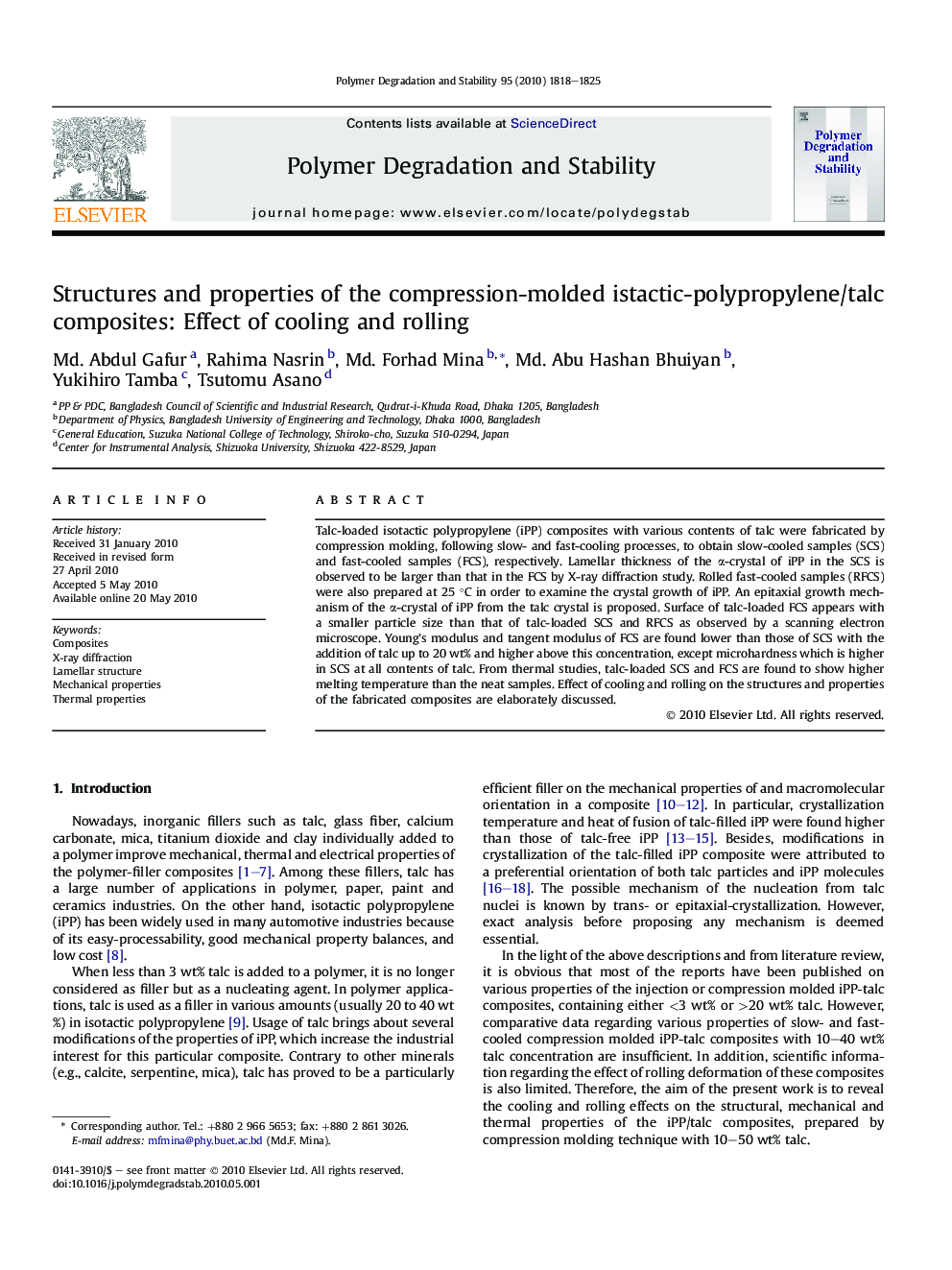| Article ID | Journal | Published Year | Pages | File Type |
|---|---|---|---|---|
| 5203687 | Polymer Degradation and Stability | 2010 | 8 Pages |
Abstract
Talc-loaded isotactic polypropylene (iPP) composites with various contents of talc were fabricated by compression molding, following slow- and fast-cooling processes, to obtain slow-cooled samples (SCS) and fast-cooled samples (FCS), respectively. Lamellar thickness of the α-crystal of iPP in the SCS is observed to be larger than that in the FCS by X-ray diffraction study. Rolled fast-cooled samples (RFCS) were also prepared at 25 °C in order to examine the crystal growth of iPP. An epitaxial growth mechanism of the α-crystal of iPP from the talc crystal is proposed. Surface of talc-loaded FCS appears with a smaller particle size than that of talc-loaded SCS and RFCS as observed by a scanning electron microscope. Young's modulus and tangent modulus of FCS are found lower than those of SCS with the addition of talc up to 20 wt% and higher above this concentration, except microhardness which is higher in SCS at all contents of talc. From thermal studies, talc-loaded SCS and FCS are found to show higher melting temperature than the neat samples. Effect of cooling and rolling on the structures and properties of the fabricated composites are elaborately discussed.
Related Topics
Physical Sciences and Engineering
Chemistry
Organic Chemistry
Authors
Md. Abdul Gafur, Rahima Nasrin, Md. Forhad Mina, Md. Abu Hashan Bhuiyan, Yukihiro Tamba, Tsutomu Asano,
